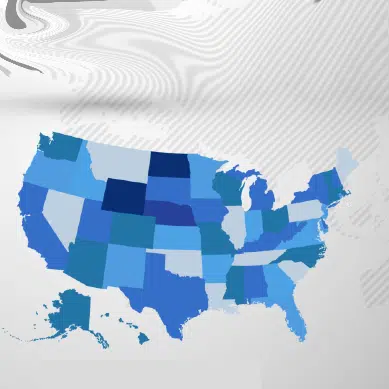What is Data Spillage?
NIST defines data spillage as a “security incident that results in the transfer of classified information onto an information system not authorized to store or process that information.”
If there’s one thing that sends shivers down the spine of organizations, it’s a data spill. Sometimes called a data leak, compromise, or exposure, data spillage happens when sensitive information slips out of a network. Unlike a data breach, which often involves malicious intent, a data spill typically occurs due to human error, carelessness, or even a touch of incompetence.
But don’t let the lack of malice fool you!
Data spills are on the rise, and they can wreak havoc on any organization. From damaged reputations to financial losses, the consequences can be severe.
Difference Between Data Breach and Data Spill
While the two terms are often interchanged, there is a key difference between the two.
A data spill or leak occurs when information is inadvertently exposed by an internal source within an organization. This can happen due to human error, carelessness, or incompetence. For example, if an employee accidentally sends a sensitive file to the wrong recipient or leaves confidential information unprotected, it can be considered a data leak. In these cases, the exposure is unintentional and typically not driven by malicious intent.
On the other hand, a data breach is the result of an external source deliberately breaching an organization’s security defenses to gain unauthorized access to data. Hackers and cybercriminals use various techniques to exploit vulnerabilities and gain entry into systems. Their objective is to steal or compromise sensitive data for personal gain, such as financial fraud, identity theft, or corporate espionage. Data breaches are often intentional and driven by malicious intent.
It’s worth noting that the line between a data spill and a data breach can sometimes blur. Criminals may exploit a data spill to orchestrate a large-scale data breach. For instance, if they obtain login credentials from a leaked source, they can use that information to launch more targeted attacks like phishing scams or ransomware attacks.
Start Getting Value With
Centraleyes for Free
See for yourself how the Centraleyes platform exceeds anything an old GRC
system does and eliminates the need for manual processes and spreadsheets
to give you immediate value and run a full risk assessment in less than 30 days
Example of a Real-Life Data Spill
Perhaps the most infamous example of such an incident was the Facebook-Cambridge Analytica scandal that made headlines in early 2018. This high-profile case highlighted the vulnerability of personal data and the potential misuse of information in the digital age.
Contrary to popular belief, the Cambridge Analytica scandal was not a hack but rather a data spillage procedure. Cambridge Analytica, a consulting firm that worked for Donald Trump’s presidential campaign in 2016, obtained personal information from millions of US Facebook accounts without users’ consent. The data was then utilized for voter profiling and targeted campaigning.
Facebook estimates that the data of up to 87 million people was improperly shared with Cambridge Analytica. This staggering number showcases the sheer magnitude of the spillage and the potential impact on individuals’ privacy. The incident raised concerns about the handling of personal data by social media platforms and the need for greater transparency and accountability.
The scandal served as a wake-up call for both users and organizations. It exposed the risks associated with sharing personal information online and highlighted the importance of robust data protection measures. The incident prompted increased scrutiny of social media platforms, leading to stricter regulations and heightened awareness of data privacy issues.
Impact of a Data Spill
The impact of cloud storage data spillage can be far-reaching and have significant consequences for individuals and organizations.
Phishing Attacks
With access to leaked data, cybercriminals can craft convincing phishing emails or messages specifically tailored to the victims.
Identity Theft
Criminals can assume someone’s identity with leaked personal information, such as Social Security numbers, or dates of birth.
Spamming and Unsolicited Communication
Leaked email addresses and phone numbers can be used for mass spamming campaigns or unsolicited communication.
Credential Stuffing Attacks
Credential stuffing relies on individuals reusing passwords across multiple platforms. By successfully accessing an account, criminals can carry out fraudulent activities or gain further access to sensitive information on other accounts of that user.
Social Engineering
Leaked data can provide cybercriminals with valuable information to create convincing social engineering scenarios. Emphasizing data spillage training classes can raise employee awareness of social engineering attempts.
What is Cloud Storage Data Spillage?
This refers to the unauthorized disclosure of data stored in cloud storage services. It could happen due to various reasons such as misconfigurations, inadequate access controls, or malicious activities.
Data Spillage Prevention Techniques
Implement controls to prevent the accidental or intentional spillage of data. Prevention methods may include robust access controls, encryption, regular audits, and employee training to raise awareness about handling sensitive information.\
- Robust access control management ensures that only authorized individuals can access sensitive data.
- Encrypting sensitive data both in transit and at rest adds an extra layer of protection. Even if unauthorized access occurs, the encrypted data is unreadable without the proper decryption keys.
- Conducting regular audits helps identify and rectify potential vulnerabilities. This includes auditing user access logs, reviewing configurations, and assessing the security of systems and applications. Audits contribute to the early detection of any anomalies or unauthorized activities.
- Data spillage training programs may cover data classification, secure data handling practices, recognizing potential risks, and understanding the consequences of data spillage.
What are Tried and True Data Spillage Procedures?
Procedures typically include reporting mechanisms, containment strategies, and steps for investigation and mitigation to minimize the impact of the spillage.
- Reporting Mechanisms: Establish clear channels for employees to promptly report any suspected data spillage.
- Containment Strategies: Have predefined steps to isolate affected systems and prevent further data exposure.
- Investigation Steps: Define a procedure for investigating the root cause and extent of data spillage.
Mitigation Actions: Implement corrective actions based on the investigation to mitigate the impact and prevent future occurrences.
Strong Security is the Best Bet For Data Spillage Prevention
The best prevention strategy for data leaks is building a strong, multi-layered cybersecurity program. In addition, data privacy protocols and data loss prevention techniques can help safeguard your company’s data.
Many organizations implement inconsistent practices and technologies, with segmented security functions overseen by various departments. A strong visual tool that covers the scope of your network is essential for centralizing data loss prevention goals.
Centraleyes’ cutting-edge platform ensures compliance with industry standards in a user-friendly platform while providing vulnerability scanning updated with the latest attack vectors. Feel confident that your system is strong and resilient.
Book a Demo Today!
Start Getting Value With
Centraleyes for Free
See for yourself how the Centraleyes platform exceeds anything an old GRC
system does and eliminates the need for manual processes and spreadsheets
to give you immediate value and run a full risk assessment in less than 30 days





